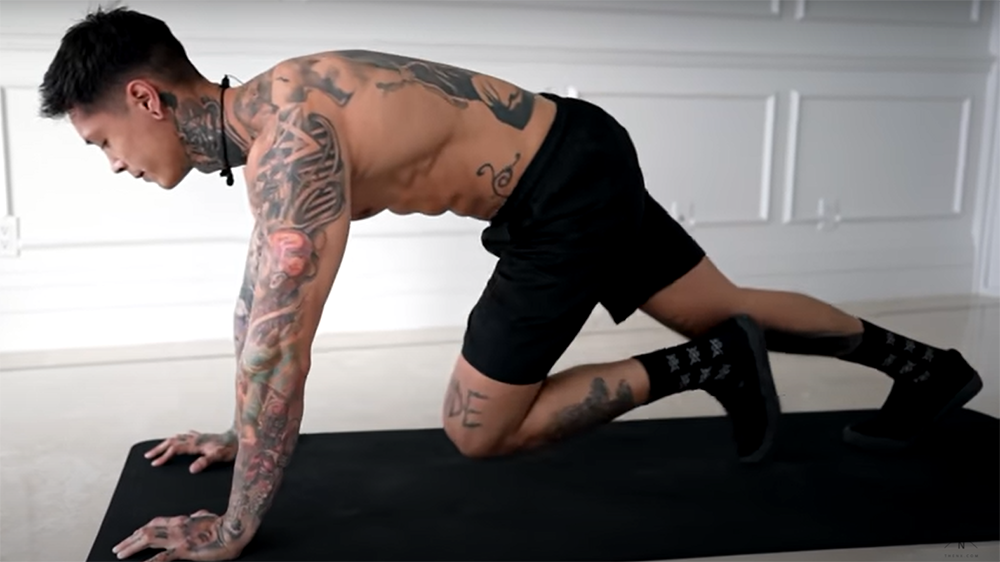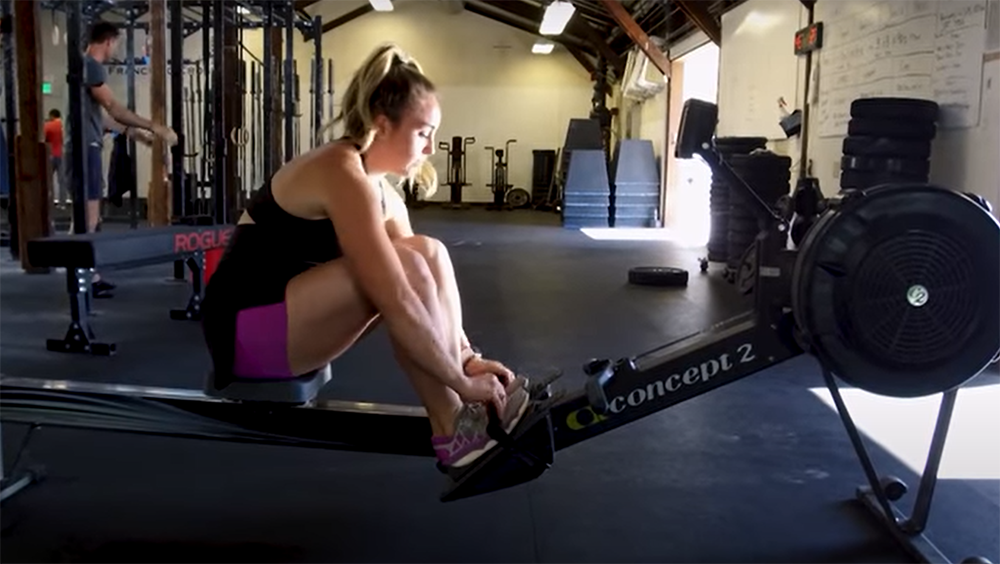Do you like to run but don’t have enough time? Or maybe you’re injured and can’t run at the moment. Either way, there are plenty of ways to build endurance without running. In this blog post, we will discuss some of the best methods for doing so. We will also provide a few tips on how to make the process more enjoyable. So whether you’re a seasoned runner or just starting out, read on for some helpful advice!
Are stamina and endurance the same thing?
No, stamina and endurance are not the same things.
Stamina is your body’s ability to perform a physical activity over an extended period of time. It is mainly a function of your cardiovascular system. Stamina is required for events such as a marathon or triathlon.
Endurance, on the other hand, is your body’s ability to continue performing even after you’ve become tired. So while stamina is about how long you can keep going, endurance is about how long you can continue going even after you’ve become tired.
This is why marathon runners often experience “hitting the wall” where their stamina has run out, but they can still finish the race by relying on their endurance.
Reasons to avoid running
There are plenty of reasons to avoid running, including the following:
- It is hard: Running is a high-impact exercise that can be hard on your body, especially if you are not used to it.
- It can cause injuries: If you are not careful, running can lead to injuries such as shin splints, runner’s knee, and plantar fasciitis.

- It is time-consuming: Running can be a time-consuming exercise, especially if you are doing it on a regular basis.
- It can be expensive: If you are running outdoors, you will need to invest in a good pair of shoes and some weather-appropriate clothing. If you are running indoors on a treadmill, you may need to pay for a membership at a gym or health club.
- It is not for everyone: Not everyone enjoys running and some people are simply not built for it.
These reasons are just a few of the many reasons why you might want to avoid running. If you are looking for an alternative way to build endurance, there are plenty of other options available.
What is VO2?
VO₂ max is determined by genetics as well as how physically active someone is throughout their life.
There are several ways to improve your VO₂max, but one of the most popular methods is running. Unfortunately, not everyone can run due to health reasons or lack of time.
Many people think that in order to increase their VO₂max, they need to start running. While running is a great way to improve your fitness level, there are other ways to raise your VO₂max without ever having to run a step.
How To Built Endurance Without Running
Endurance is key for athletes of all levels. Whether you’re a weekend warrior or elite-level athlete, improving your endurance can help take your game to the next level.
But what if running isn’t an option? What if you have an injury, or simply don’t enjoy running? Are there other ways to improve endurance?

Yes, there are other ways to improve endurance without running. In fact, many athletes don’t run at all and still have excellent endurance.
Here are a few methods you can try:
Method #01: Cycling
Cycling is low-impact, so it’s easy on your joints, and it’s a great way to build up your aerobic fitness.
Cycling can be done indoors or outdoors, and it’s a great way to get some fresh air and enjoy the scenery. You can go for a leisurely ride, or you can add in some hills or intervals to make it more challenging.
In addition to improving endurance, cycling can also help improve your cholesterol levels, increase bone density, and reduce the risk of obesity and heart disease.
Start by cycling at a moderate intensity for about 20 minutes. Gradually increase the duration of your rides as you become more comfortable with cycling.
If you’re new to cycling, start with a basic bike and progress to a more challenging model as you get stronger. Also, make sure to wear appropriate clothing and gear for cyclings, such as breathable clothes, sunscreen, sunglasses, and a helmet.
Endurance cyclists typically ride for distances of 50 to 150 miles per week. If you’re not ready to cycle that much, start by cycling for 20 to 30 minutes a few times a week and gradually increase the duration.
However, be aware that cycling can also cause some injuries, such as saddle sores, so it’s important to take precautions and listen to your body.
Method #02: Swimming
Swimming is another great way to improve endurance without running. It’s a total-body workout that engages all the major muscle groups. And because the water supports your body weight, it’s a great exercise for people with joint problems.
Swimming also has some other benefits:
- It can help you lose weight or maintain a healthy weight.
- It’s excellent for improving cardiovascular health.
- It can improve your mood and reduce stress levels
If you don’t know how to swim, now is a good time to learn! There are plenty of swimming classes available at local gyms and community centers. Or you could enroll in a swim camp if you want more structure.

Swimming also makes a great cross-training activity for runners. When you’re not running, try swimming a few times a week to improve your endurance. You may find that you can run longer and faster when you return to running after taking some time off.
Moreover, swimming is a great way to cool down after a long run on a hot day. So if you’re looking for an endurance-building activity that doesn’t involve running, give swimming a try!
However, there is one downside to swimming: it can be quite boring. If you don’t enjoy swimming, it may be difficult to stick with it for long periods of time.
To make your swim workouts more interesting, try adding some variety. For example, mix up your strokes, vary the speed and intensity, or add in a few sprints. You can also try swimming in different locations, such as the ocean or a pool with a diving board.
Swimming is a great way to get in shape, and it can be enjoyed by people of all ages. Give it a try!
Method #03: Take a rest and relax
This is the easiest and most comfortable way to build endurance. When you are resting, your body will restore all the energy that you have lost while running. This means that when you start running again, you will have more energy and can continue for a longer time. You don’t have to do any strenuous exercises; just relax and enjoy your time.
In addition, resting will help your body to recover from any injuries that you may have sustained while running. Make sure that you take at least one day off per week, and more if needed. This will allow your muscles to rebuild and heal properly.
So, next time you feel like you can’t run anymore, take a break and relax.
You may not be able to run as long or as fast as you want, but it is definitely better than stopping completely. And who knows, you might just enjoy your time off so much that you won’t want to run again! Make sure you get enough sleep and relax your body and mind.
Method #04: Cross-train
If you don’t want to take a break from running, you can try cross-training. This is when you do other exercises that are not running. This will help to build your endurance and make you stronger.

There are many different types of cross-training exercises that you can do. You can try biking, swimming, or using the elliptical machine. These exercises will help to build your endurance and make you stronger.
You can also try weightlifting. This will help to build muscle mass and strength. Weightlifting is a great way to cross-train for runners.
When you are cross-training, be sure to alternate the exercises you do. This will help to prevent overuse injuries.
Be sure to also stretch after your cross-training workout. This will help to keep your muscles loose and flexible.
Cross-training is a great way to build endurance without running. It is a great way to mix up your workouts and avoid overuse injuries. be sure to include cross-training in your workout routine.
Method #05: HIIT
High-intensity interval training (HIIT) is a great way to build endurance without running. HIIT involves alternating between short bursts of high-intensity exercise and brief periods of rest or low-intensity activity. This type of training can help you burn more fat and improve your cardiovascular health.
To do HIIT, choose an activity that you can do at a high intensity, such as cycling, sprinting, or jumping rope. Perform the activity for 20-30 seconds, then rest for 30-60 seconds. Repeat this cycle six to eight times. You can also do HIIT on a stationary bike or elliptical machine.
If you’re looking for an endurance workout that doesn’t involve running, HIIT is a great option. It’s a challenging workout that can help you burn fat and improve your cardiovascular health. Start out slowly and work your way up to more cycles as you get stronger. Have fun and be sure to listen to your body!
There are many other ways to build endurance without running. In our opinion, these 5 are the most effective.
Boosting Endurance Without Hitting the Pavement: Alternatives and Benefits
Endurance isn’t limited to running. There are various ways to build stamina and endurance through alternative activities. Here’s a comparison of these activities and the benefits they offer.
| Activity | Description | Benefits |
|---|---|---|
| Cycling | Cycling is a low-impact aerobic exercise that improves cardiovascular health and lower body endurance. It’s easier on the joints than running. | Enhances cardiovascular fitness, strengthens leg muscles, and aids in weight management. |
| Swimming | Swimming is a full-body workout that builds endurance, improves lung capacity, and enhances overall fitness. It’s gentle on the joints. | Develops cardiovascular stamina, tones muscles, and supports joint health. |
| Rowing | Rowing provides a total-body workout, targeting muscles in the arms, legs, and core. It’s an effective way to improve endurance and strength. | Builds upper and lower body strength, enhances cardiovascular endurance, and promotes good posture. |
| Dancing | Dancing combines aerobic exercise with rhythm and movement. It’s a fun way to boost endurance, coordination, and flexibility. | Improves cardiovascular health, enhances balance, and promotes mental well-being through music and social interaction. |
| Hiking | Hiking involves walking in natural environments. It challenges endurance while connecting with nature and provides a mental break from daily life. | Builds lower body strength, enhances cardiovascular fitness, and offers stress relief and mental rejuvenation. |
Explanation of the Table:
- Activity: Lists various alternative activities to running for building endurance.
- Description: Provides an explanation of each activity and its endurance-building aspects.
- Benefits: Highlights the physical and mental benefits of engaging in each alternative activity.
Building endurance doesn’t always require running. Cycling, swimming, rowing, dancing, and hiking are excellent alternatives that provide similar physical benefits while offering unique advantages. These activities can improve cardiovascular health, build strength, and enhance overall fitness. Plus, they add variety and enjoyment to your workout routine.
Ultimately, the key is to find an activity you enjoy and can stick with to achieve your endurance goals while staying active and healthy.
FAQ
What exercise is comparable to running?
Cycling, swimming, and rowing are all excellent exercises that can be used to build endurance without running. These activities are also low-impact, which makes them a great choice for those who are looking to avoid injury. Additionally, they work in different muscle groups than running does, so they can help you stay balanced and healthy overall. Try cycling or swimming for a few weeks and see how you feel; if you’re looking for something more challenging, try rowing.
Can I still run even if I don’t want to build endurance?
Of course! Running is an excellent exercise that provides many health benefits. However, if you are looking to reduce your risk of injury or simply want to switch up your routine, consider trying one of the exercises listed above. They can provide a great workout and help you build endurance without running.
Do you have any other tips for building endurance?
Here are a few more tips to help you build endurance without running:
- Make sure that you are well hydrated before and during your workout. Drink plenty of water throughout the day, and take breaks if necessary.
- Start slowly and gradually increase your intensity over time. This will help you stay safe and avoid injury.
- Listen to your body and take breaks when needed. If you’re feeling tired or sore, give yourself a break! You can always pick up the pace later.
- Be patient – it takes time to build endurance. Don’t expect to be able to run for hours on end right away. Start with shorter runs and build up gradually.
- Wear the appropriate clothing and gear for your activity. This will help you stay safe and comfortable while you work out.
Can swimming help me build endurance without running?
Yes, swimming is an excellent low-impact exercise that can help you build endurance without running. It engages multiple muscle groups and provides an effective cardiovascular workout.
What are the benefits of cycling for building endurance without running?
Cycling is a great alternative to running for building endurance. It’s gentle on the joints and can be adjusted in intensity, making it suitable for all fitness levels.
How can I use elliptical training to increase my endurance without running?
Elliptical trainers offer a low-impact, full-body workout that can boost endurance. Focus on increasing the resistance and duration of your sessions for better results.
Is hiking a good way to build endurance without running?
Hiking is an excellent way to build endurance and enjoy the outdoors. Choose challenging terrains and gradually increase the duration and elevation of your hikes.
Can I build endurance through high-intensity interval training (HIIT) without running?
Yes, HIIT workouts can improve endurance without traditional running. These workouts involve short bursts of intense exercise followed by rest periods, effectively boosting cardiovascular fitness.
How does rowing help in building endurance without running?
Rowing is a full-body workout that can significantly improve endurance. Adjust the resistance and intensity levels to challenge yourself and build endurance over time.
What role does cross-training play in building endurance without running?
Cross-training involves a variety of exercises and activities. Incorporating different forms of exercise, such as swimming, cycling, and strength training, can enhance overall endurance.
Can I build endurance through dance or aerobics instead of running?
Yes, dance and aerobics classes can be fun ways to build endurance. These activities raise your heart rate and improve stamina while offering a creative and enjoyable experience.
How can I design a circuit training routine to build endurance without running?
Circuit training combines strength and cardio exercises in a structured sequence. Design a circuit that targets various muscle groups and includes cardio intervals to enhance endurance.
What nutrition and hydration strategies can help me build endurance without running?
Eating a balanced diet rich in carbohydrates, protein, and healthy fats can support endurance-building workouts. Proper hydration is also essential to maintain performance and recover effectively.
Useful Video: Top 5 Secrets to Building Stamina – How to Build Stamina – Improve Your Endurance
Final Thoughts
Endurance is key to any fitness goal, and it’s no different when you’re looking to build muscle. While running can be a great way to increase your endurance, not everyone has the time or desire to start pounding the pavement. If that sounds like you, don’t worry – there are plenty of other ways to get in a good endurance workout.
Methods like cycling, swimming, and using an elliptical trainer can all help you increase your endurance without running. And if you’re looking for a challenge, try adding in some HIIT (high-intensity interval training) workouts to your routine.
Whatever method you choose, make sure to focus on increasing your heart rate and working up a good sweat. That’s the key to building endurance without running.
I hope this article has given you some ideas on how to increase your endurance without running. Be sure to share this article with your friends and family.
Thank you for reading!









Leave a Review